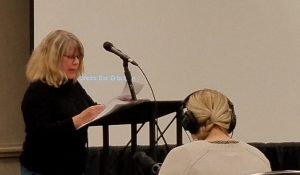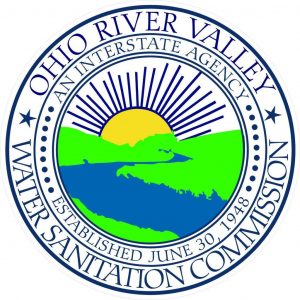 Below are comments Randi Pokladnik delivered at an ORSANCO April 1 public hearing on proposed changes to ORSANCO’s pollution control standards.
Below are comments Randi Pokladnik delivered at an ORSANCO April 1 public hearing on proposed changes to ORSANCO’s pollution control standards.
Be sure to make your own comments! There’s a hearing in Evansville, IN on April 4 and one on April 8 in Cincinnati, OH. You can submit comments until April 15. Talking points you can use are also available in this post.
All the details you need to comment are here, but if you need any help, e-mail robin@ohvec.org ASAP. You can also read the comments OVEC submit on this page, below Randi’s comment.
Comments to ORSANCO Proposed PCS 2019
Randi Pokladnik, Ph.D.
86200 Tappan Highland Road
Uhrichsville, Ohio 44683
April 1, 2019
I am here to speak for my extended family and friends who live along the Ohio River from Toronto to Marietta Ohio.
The Ohio River Valley Watershed is very fortunate to have had a multi-state compact in place since 1948 which protects many uses of the river including its use as the drinking water source for five million residents.
While I applaud the new revisions in that they will keep the Pollution Control Standards in place and are far superior to the proposed option 2 of the PCS released in 2018 , I would urge these standards not be made discretionary but instead be mandatory.
Permit by permit review by states fails to hold the states accountable as it does not address equivalent levels of protection under ORSANCO. I realize ORSANCO has no authority to mandate or enforce standards and to date has not addressed the monumental build-out of the petrochemical industry in the Ohio River Valley.
However, the current uses of the Ohio River by both historical industries as well as the impact of petrochemical development will certainly have far reaching effects on water quality. Under the Energy and Policy Act of 2005, oil and gas facilities are exempt from most major environmental laws; however, this does not mean that they do not release toxic compounds that affect human health and the environment. This build-up will undoubtedly affect the drinking water of millions of residents and the aquatic ecosystems.
It is my understanding that except for ORSANCO’s monitoring of organic contaminants, there are no other agencies or facilities that have any programs in place to protect citizens from contaminants that will enter the river from watersheds that are currently being fracked. Additionally, the construction of Shell’s ethane cracker in Monaca, Pa. and the possible sitting of another ethane cracker in Belmont County will significantly increase the amount of pollution coming from well pads using high pressure hydraulic fracking in the watershed.
Peer reviewed studies show that many of the chemicals released through the process of fracking and plastics production are carcinogenic, endocrine disrupting, obesogenic and become persistent in the environment. Without ORSANCO’s Organic Detection System, there is no way to ensure that spills or non-point pollutants will be detected.
In light of this, I have recommended my extended family consider purchasing a water filtration system to use for their residential drinking water.
I urge that ORSANCO seek secure avenues of permanent, long-term funding for the Organic Detection System. Additionally, in light of the petrochemical development, the ODS system, along with other testing programs, should be expanded. These additions might include:
- More GC/MS systems along the river
- More sampling sites, closer to regions affected by fracking and petrochemical facilities
- Keep triennial review in place
- Conduct a non-point source study (last one was 2003)
- Add VOC compounds that are found in fracking industry to ODS analysis
- Update Tier II chemical storage data
People along the Ohio River Valley are counting on their water being safe for drinking. I am sure water consumers would be willing to pay a modest fee such as ten dollars a household to support additional testing financially, or ORSANCO might consider adding a fee per point source outfall for all industrial users of the river.
Thank you for taking my comments.
Here are the comments OVEC submitted:











